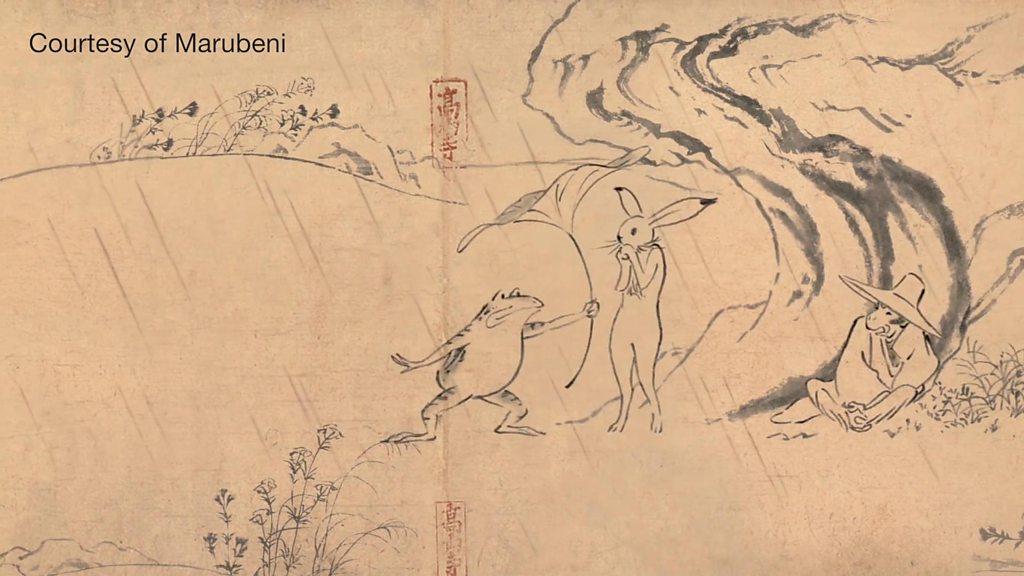The cosplay kids of Myanmar - in pictures
- Published
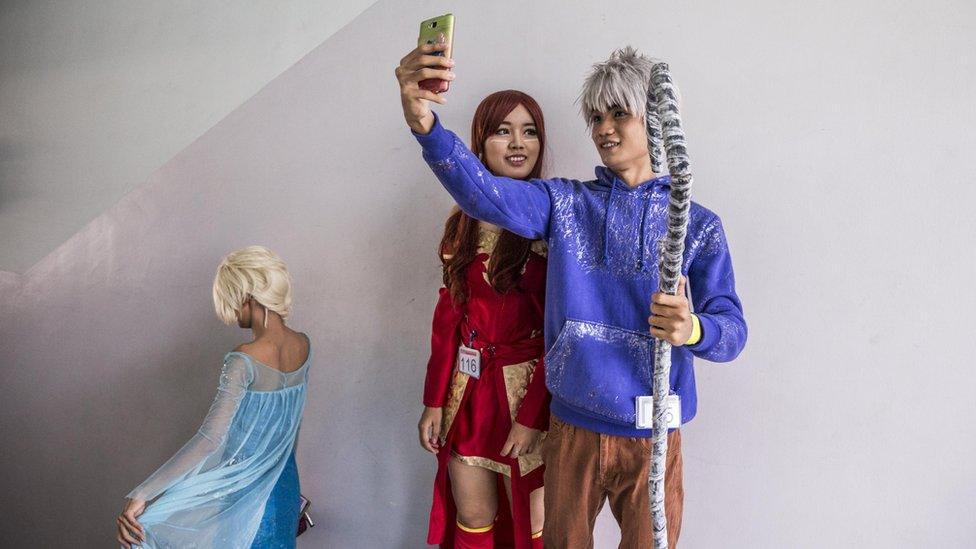
Cosplay has been one way in which Myanmar's young people have sought to define themselves in a radically different world to that of their parents.
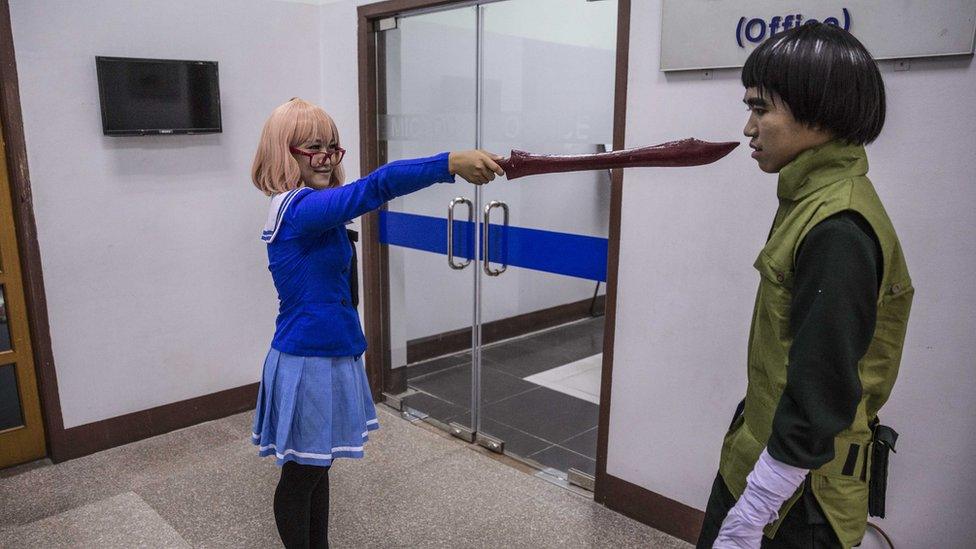
Cosplay encourages participants to leave their everyday selves behind, often taking on the look of a favourite character from video games, anime or cartoons.
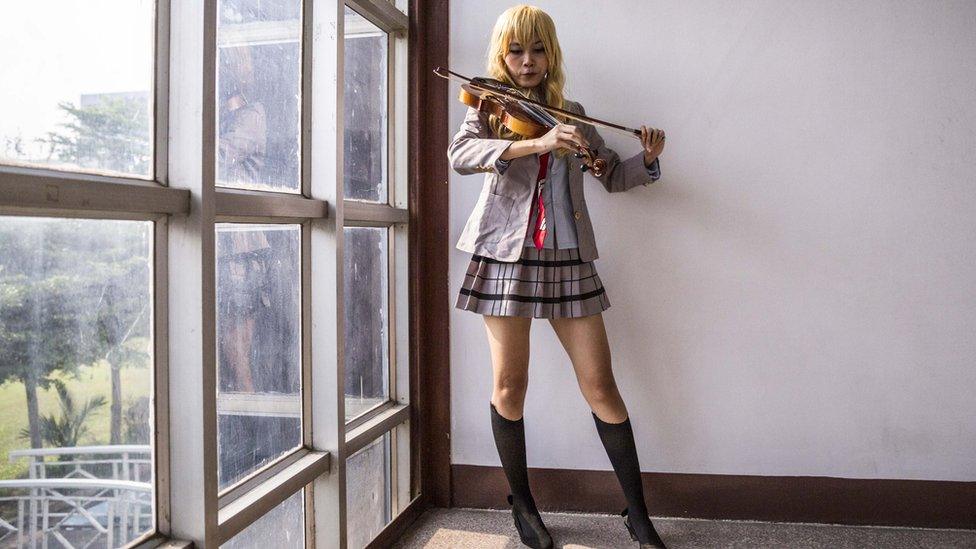
Modern cosplay culture began in Japan, from where many participants took their stylistic cues
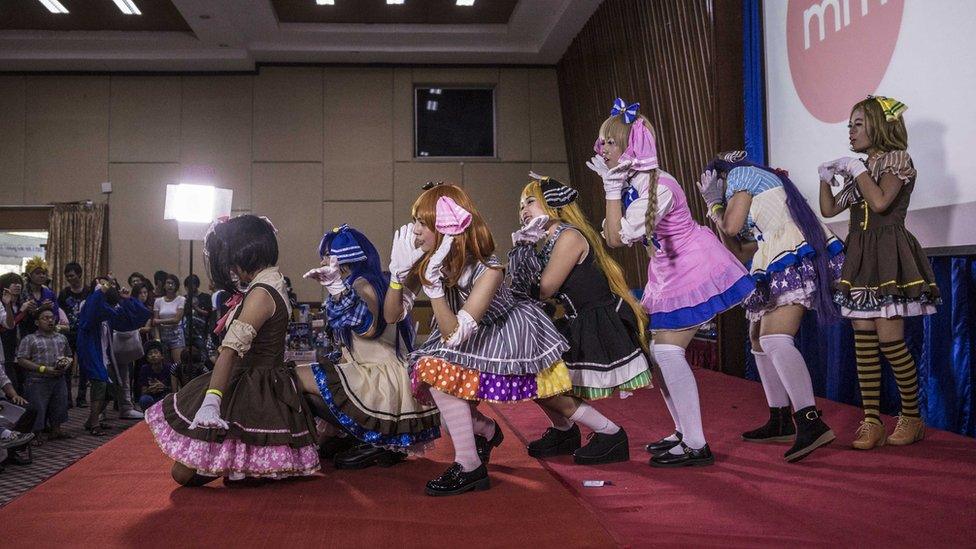
The recent festival - the eighth to be held in Myanmar - gave participants a chance to show off their costumes and to participate in choreographed dances.
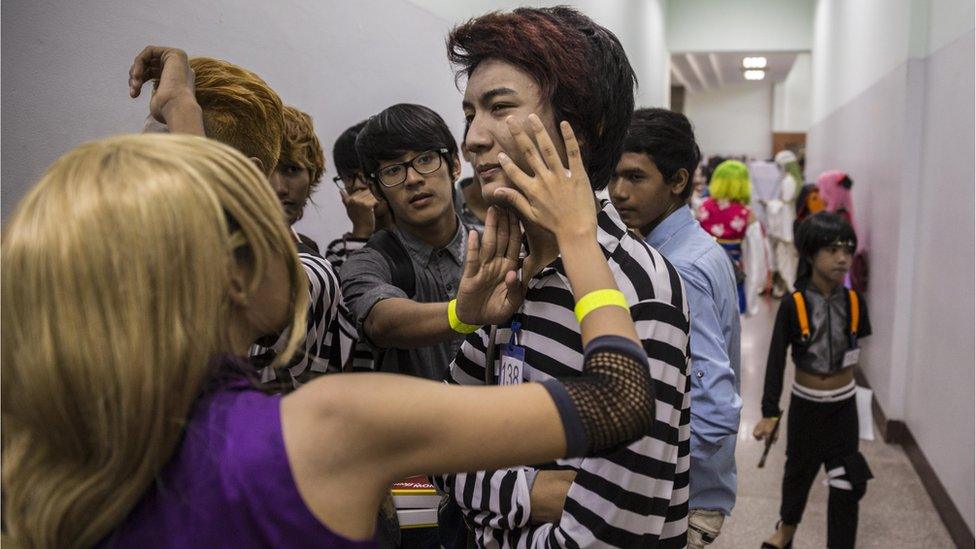
After months of preparation for some, participants applied the finishing touches to their look at the venue, part of Hlaing University in Yangon.
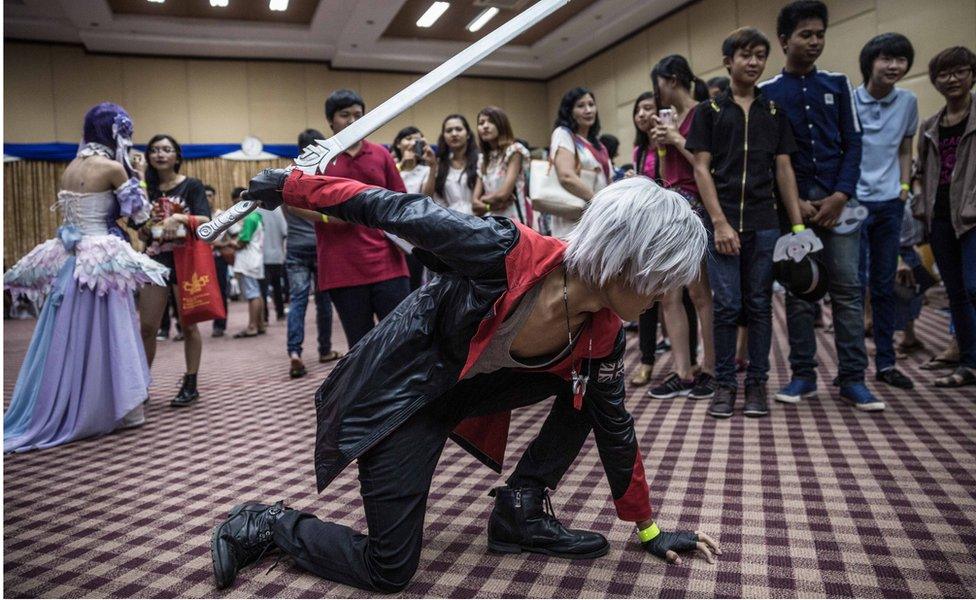
While the first day resembled a nervous school dance, by the second day the building was awash with brightly coloured outfits and cartoonish fake weapons.
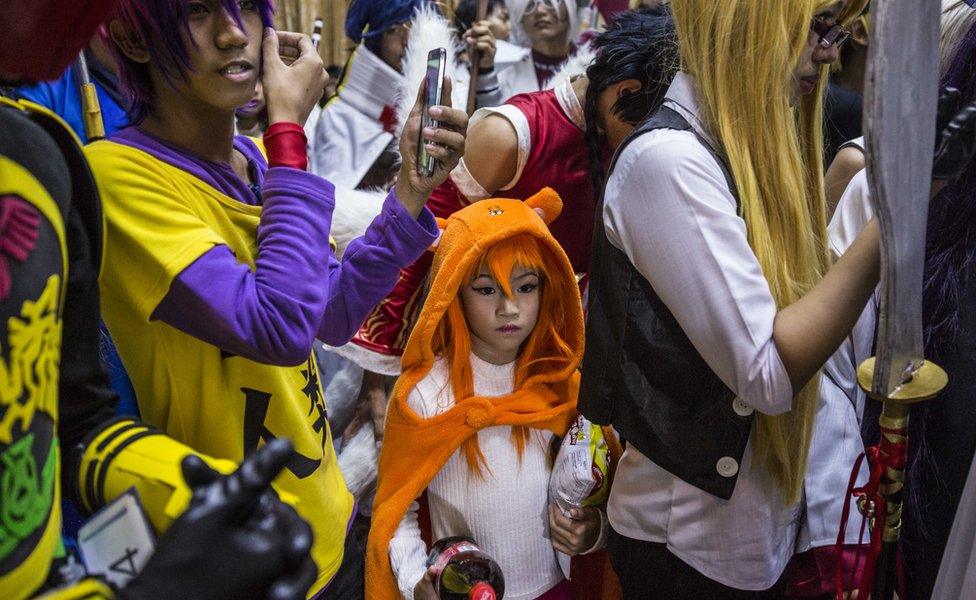
The event brought together a mix of people of different ages and genders, some of whom switched gender roles in their costume - a common practice in cosplay and a nod to the free expression cosplayer feel it encourages.

The cosplay subculture is something that would once have been hard to imagine in what was once one of South East Asia's most repressive countries, and which is still amongst its poorest.

Though still in its infancy, the growing cosplay community in Myanmar offers fans a space they can call their own, where many normally strict social rules do not apply - the antithesis of the decades of control and isolation the country has seen.
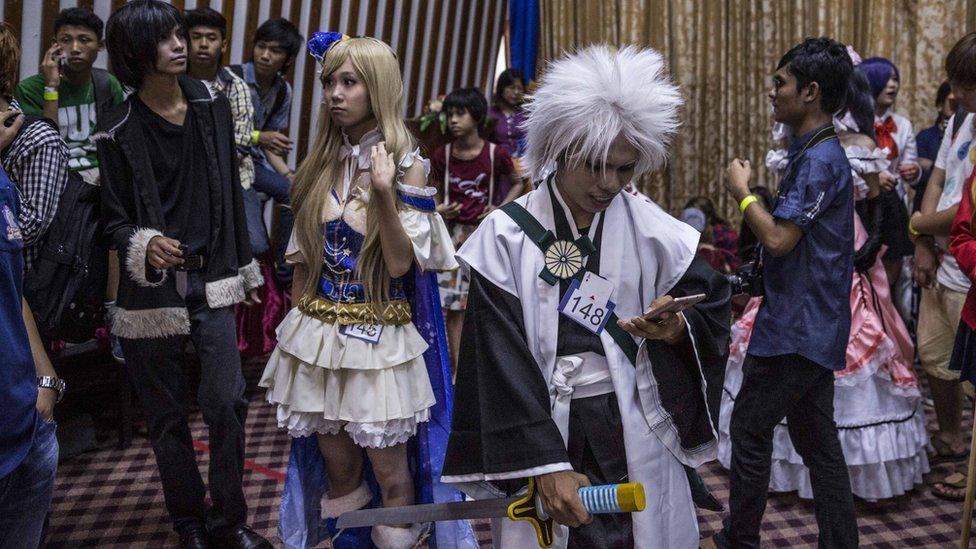
Even cosplay samurai need social media, something which has helped spread the subculture in Myanmar and around the world.
- Published14 April 2016
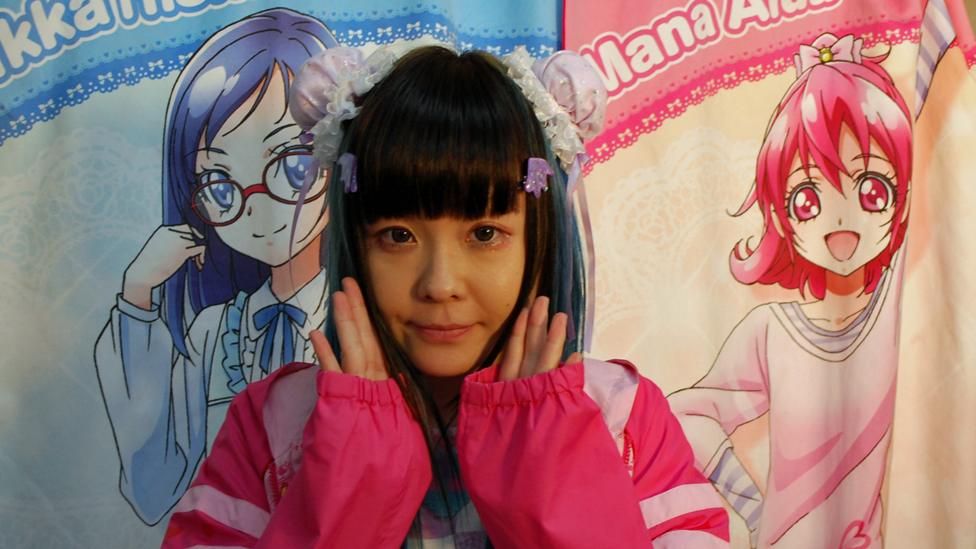
- Published10 August 2015
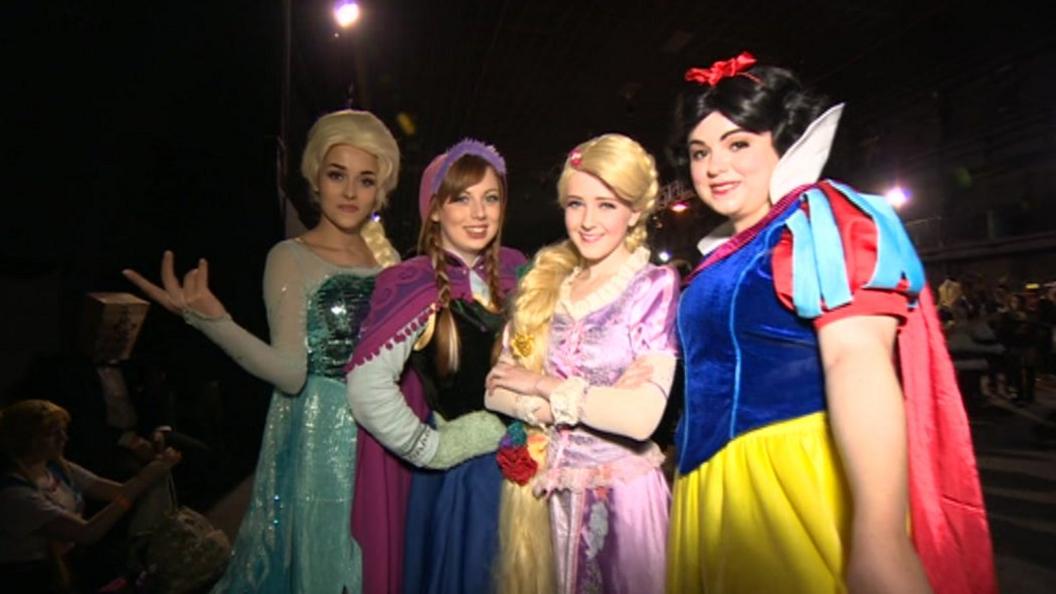
- Published19 October 2015

- Published14 July 2014

- Published3 July 2014
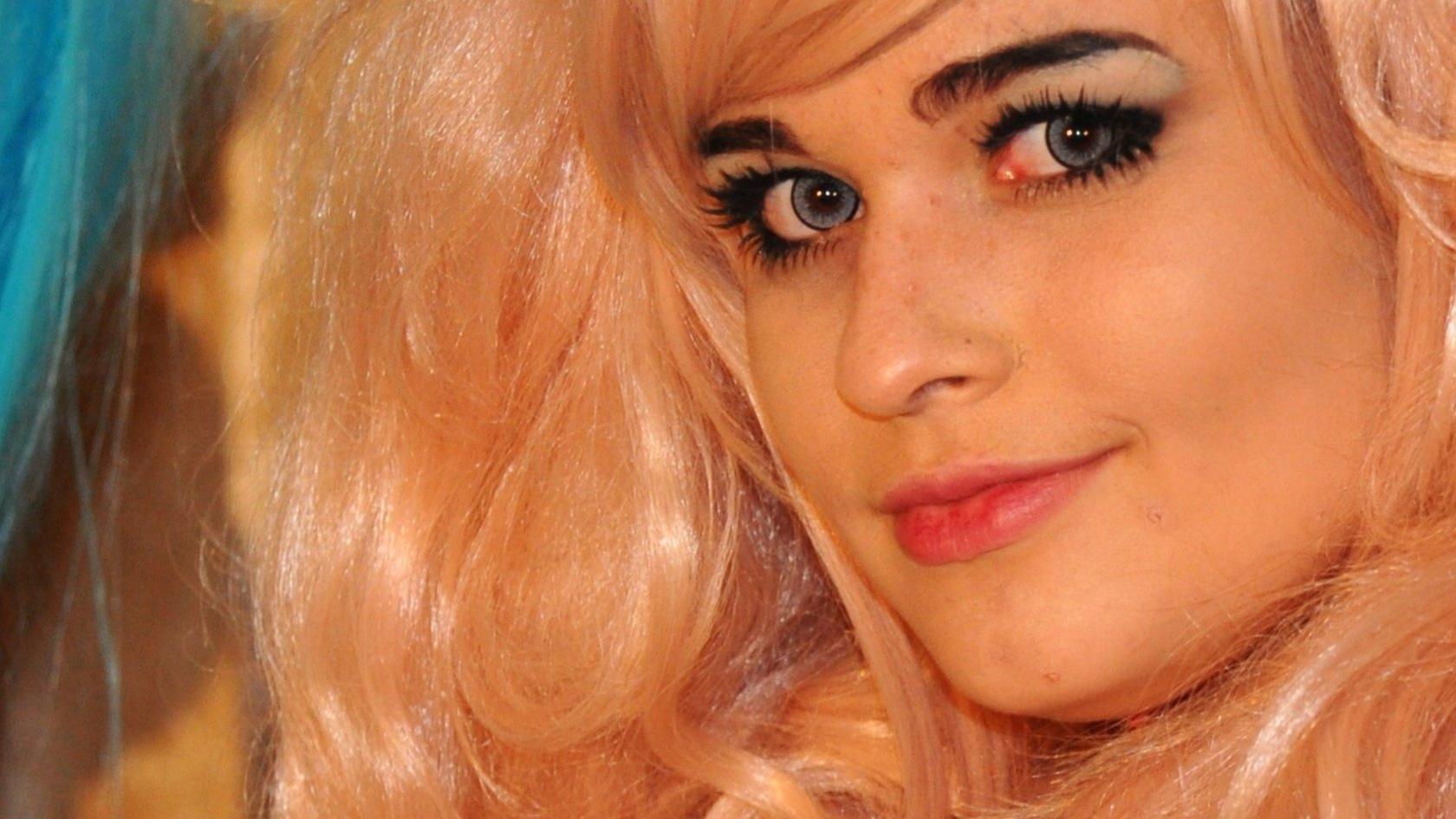
- Published18 March 2016
